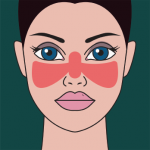Today the British Isles Lupus Assessment Group (BILAG) Index is commonly used to chart multi-system progression of lupus from year to year, but just three decades ago there was no system in place to track this complex chronic condition.
By the early 1980s the lupus research community recognized that the formal assessment of patients with lupus was hopelessly in disarray. As Matthew Liang, MD, MPH, professor of medicine at the Harvard Medical School in Boston, pointed out later, around 60 different activity indices for lupus were published between the mid 1950s and mid 1980s, and they were all inadequate.1 There were attempts by many individual clinicians to capture lupus activity in ways that were never validated or shown to be reliable; all were global score indices.
The 1980s saw a considerable improvement. At the University of Toronto, Dafna Gladman, MD, and Murray Urowitz, MD, devised the Systemic Lupus Erythematosus Disease Activity Index (SLEDAI); although it is a global score, it was shown to be reliable, valid, and sensitive to change.2 Dr. Liang also developed the Systemic Lupus Activity Measure (SLAM).3
Different Concept of Measurement
In the United Kingdom, the relatively small number of rheumatologists interested in lupus began to think along different lines. It seemed in particular to Paul Bacon, MD, University of Birmingham, and Michael Snaith, MD, University of Sheffield Medical School, that the notion of capturing disease activity with a single score, however thoughtfully derived and validated, was a suboptimal way to capture the reality of a multisystem disease like lupus. In particular, they balked at the idea that severe disease in a single system that caused a patient fighting for her life in hospital could, at least theoretically, have the same score as a patient who had little activity in five or six systems and who might still be working. In 1984, during a discussion in Dr. Bacon’s Birmingham garden, they decided a better approach would be an index that:
- Showed the level of activity in different organs and/or systems;
- Captured change in activity over time;
- Was based upon the principle of the physician’s intention to treat; and
- Recognized that disease activity was one part of a larger equation. To determine the totality of the effect of lupus, you needed a patient self-assessment index and a damage index.
Birth of BILAG
Realizing that developing this index was going to require a great effort, Drs. Snaith and Bacon decided to summon help. At that time I was working as Dr. Snaith’s senior registrar at University College Hospital. Others who were drafted in included Deborah Symmons, MD, University of Manchester (United Kingdom) (then senior registrar to Dr. Bacon); Peter Maddison, MD, University of Wales in Bangor; and Asad Zoma, MD, Hairmyres Hospital in East Kilbride, Scotland (then in training in Glasgow). With additional support from Barry Bresnihan, MD, St. Vincent’s University Hospital in Dublin; Nick Viner, MD, Peninsula Medical School in Exter, England; John Coppock, MD, University Hospitals Coventry and Warwickshire NHS Trust in Coventry, England; and Elaine Hay, MD, Keele University in Staffordshire, England. The group began meeting every three to four months (and still does).

